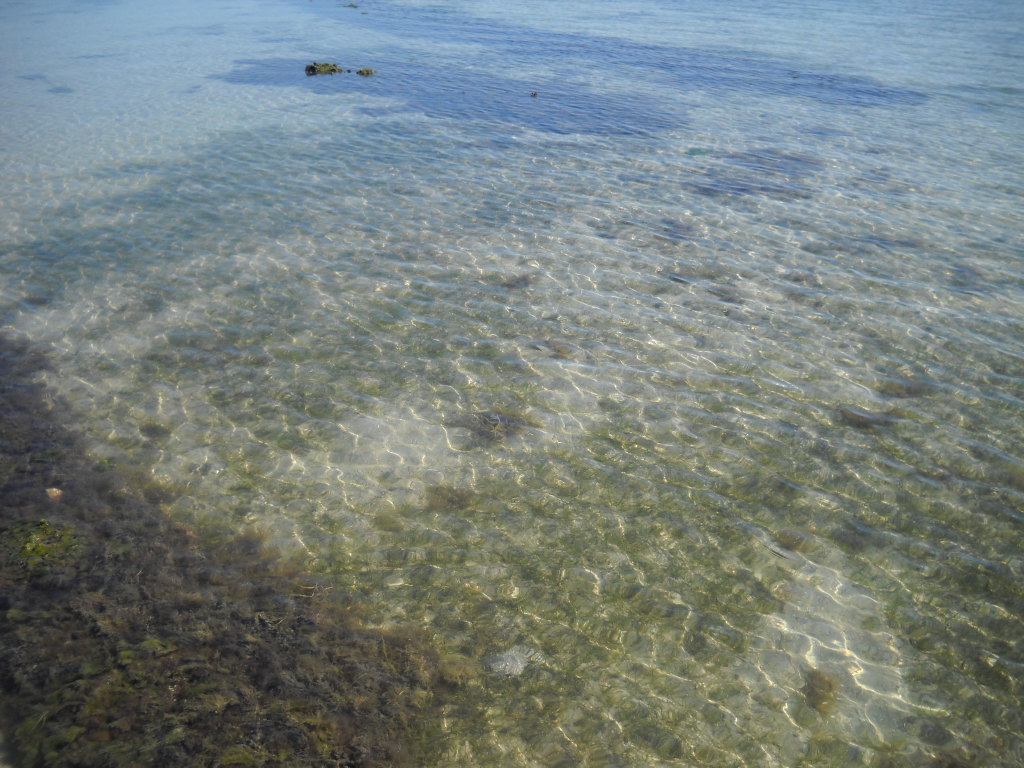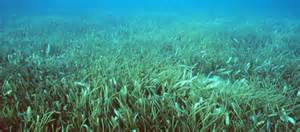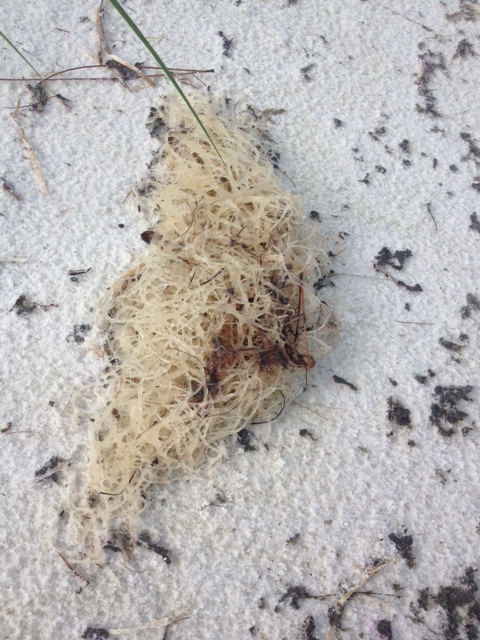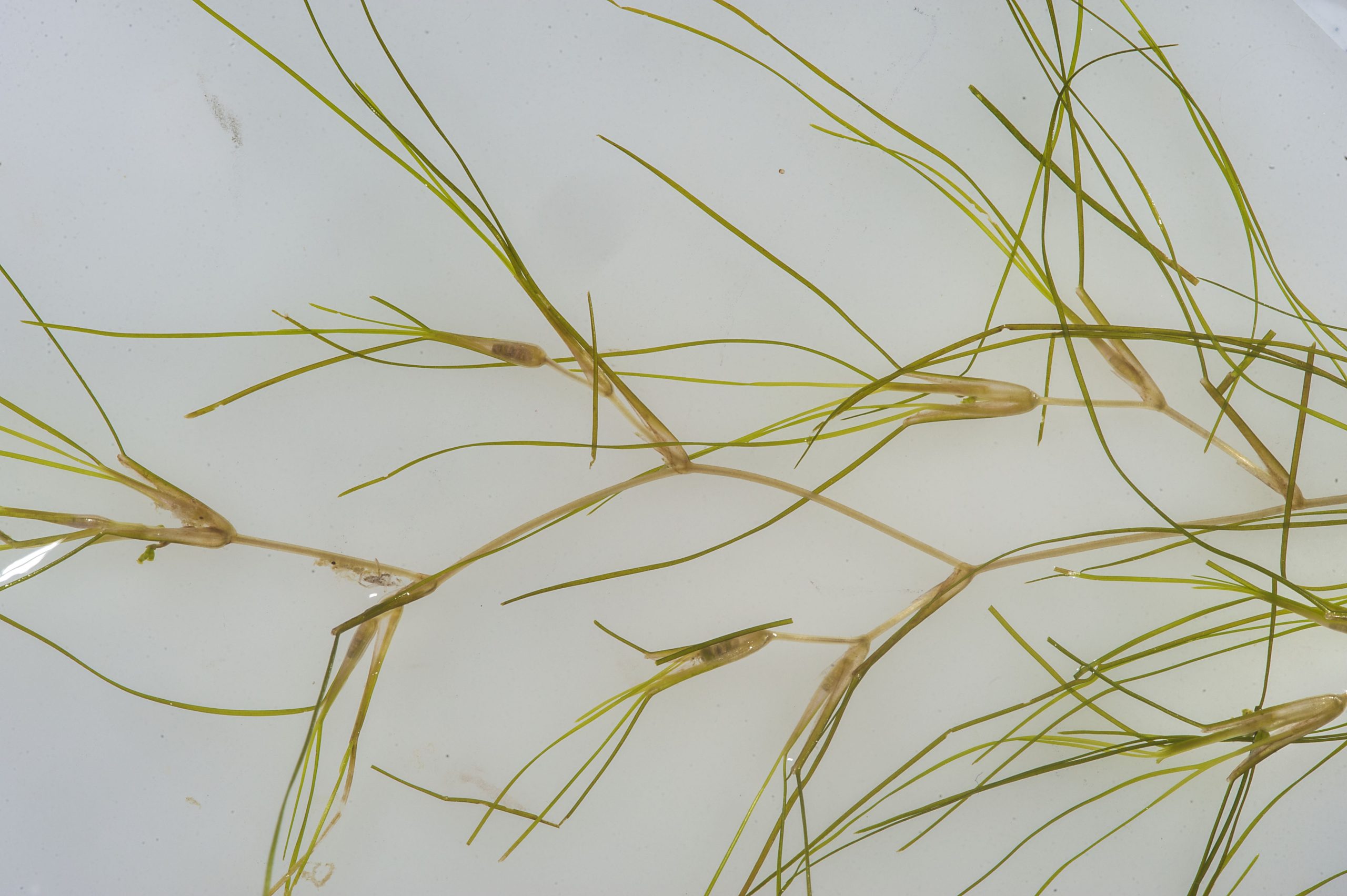As we mentioned when we began writing about seaweed, seaweed and seagrass are very different. Seagrasses are true plants in the sense that they have an internal vascular system that runs water and other material throughout the plant. Like the artery and veins of animals – they are called xylem and phloem. Water in the soil is diffused through the tissue of the roots into the xylem, which moves the water up through the stem to the leave where it is used in photosynthesis. The sugars produced by photosynthesis are moved through back down into the plant by traveling through the phloem. Seagrasses produce small flowers that are pollinated by dispersing the pollen in the currents and by small invertebrates, such as amphipods and polychaetae worms. Seagrasses are true plants.

Photo: Rick O’Connor
Believed to have originated as land plants, today there are about 72 species of seagrasses found around the world; seven are found in Florida; five found in the Pensacola Bay system. Though found in some open ocean systems, most seagrass beds are found in the protected waters of the estuary. They thrive in areas with low wave energy and clear water. They help stabilize the shoreline and remove pollutants from the water column. There is an abundance of marine creatures who use the seagrass beds as either a source of food, or habitat. It has been determined that at least 80% of the commercially important finfish and shellfish use seagrass beds for at least part of their life cycle.
Three of the five local species can be found in Santa Rosa Sound. Shoal grass (Halodule) has a flat blade but is very thin, between 2-3mm wide. Because it is so narrow, less surface area, it can tolerate waves better than turtle grass, and thus lives closer to the shoreline. Within the shoal grass you can find a variety of small baitfish feeding, as well as blue crabs and hermit crabs scavenging. But it does not provide the hiding spaces that the wider blade turtle grass does.

Photo: Leroy Creswell
Turtle grass (Thalassia) have blades that are 10mm wide. These wider blades do not handle the waves as well and thus turtle grass grows in deeper waters further off the beach. How deep they can grow is a function of the amount of sunlight reaching the bottom. In the Florida Keys turtle grass has been found at depths of 30 feet. Locally maximum depths are more likely near 10 feet. The wide blades of this grass provide surface area for a variety of small algae and invertebrates to attach. These epiphytes and epizoids are a major player in the food web of seagrass beds. Numerous invertebrates and fish feed on this “scum layer” found on the grass blades. The grazers attract low level predators such as pinfish, puffers, and sea horses. These in turn attract larger predators such as rays, speckled trout, and flounder. Manatees and sea turtles can be found here as well as sharks and the occasional bottled nose dolphin.

Photo: Virginia Sea Grant
Manatee grass (Syringodium) resembles shoal grass, but the blade is round instead of flat. It can be found forming its own patches or dispersed within the other species. The abundance of this species seems to be increasing in local waters.

Poto: Rick O’Connor
Widgeon grass (Ruppia) is a common seagrass found in the upper portions of our estuary. Though it can live in the higher salinities near Pensacola Beach, it can also tolerate the lower salinities of the upper bays and thus, with less competition, does very well here. It also resembles shoal grass but differs in that the blade branches as it grows. Like all seagrass beds, widgeon grass can support a lot of marine creatures and increase the overall biodiversity of the bay.

Since the 1950s the northern Gulf coast has witnessed a decline in seagrass acreage. The decline was caused by a combination of factors. One, increased sedimentation with stormwater and development. In some cases, the seagrass was literally buried and in others the sediment decreased water clarity which decreased needed sunlight. Two, shrimp trawls. At one time shrimpers could pull their trawls through the grass to catch shrimp. This ripped and destroyed much of the habitat and the state closed shrimping in all grassbeds. Three, seawalls. Waves reflecting off the seawalls increased the wave energy within the Sound to a point that seagrass could not tolerate it. The landward edge of many grassbeds began to retreat from these seawalls reducing the overall acreage of the seagrass bed. Four, prop scars. Boats running through the grassbeds will cut deep scars in the grass that reach the sand beneath. It can take up to 10 years for the system to restore itself. And, with more boats out there, there are more scars. Five, the increase in the mass of drift algae settling on the grasses. These drift algae populations increase with increased nutrients being discharged into the Sound from land-based run-off. Drift algae cover the grasses decreasing their ability to absorb much needed sunlight.
Monitoring in recent years has shown that our seagrasses are trying to restore themselves and some beds have increased in size during the last couple of decades. Monitoring continues.
References
Florida Seagrass. Florida Department of Environmental Protection. https://floridadep.gov/rcp/seagrass.
Potouroglou, M., Pedder, K., Wood, K., Scalenghe. 2022. What to Know About Seagrass, the Ocean’s Overlooked Powerhouse. World Resources Institute. https://ocean.si.edu/ocean-life/plants-algae/seagrass-and-seagrass-beds#:~:text=Seagrasses%20produce%20the%20longest%20pollen,flower%20and%20fertilization%20takes%20place.
Seagrass and Seagrass Beds. Ocean, Find Your Blue. Smithsonian National Museum of Natural History. https://ocean.si.edu/ocean-life/plants-algae/seagrass-and-seagrass-beds#:~:text=Seagrasses%20produce%20the%20longest%20pollen,flower%20and%20fertilization%20takes%20place..
Seagrass Species Profiles. South Florida Aquatic Environments. Florida Museum of Natural History. https://floridadep.gov/rcp/seagrass.
 1
1
